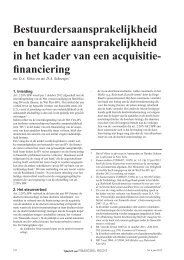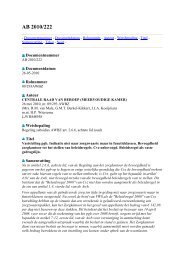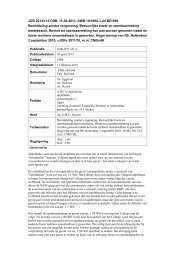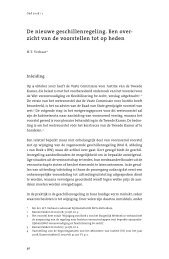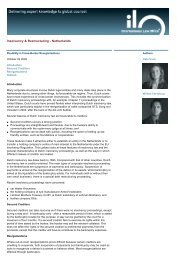Life Sciences Outlook 2012 Dutch biotech companies ... - NautaDutilh
Life Sciences Outlook 2012 Dutch biotech companies ... - NautaDutilh
Life Sciences Outlook 2012 Dutch biotech companies ... - NautaDutilh
Create successful ePaper yourself
Turn your PDF publications into a flip-book with our unique Google optimized e-Paper software.
The evolving relationship between management and investors as <strong>companies</strong> mature: points of<br />
tension and how to deal with those<br />
A start-up run part-time by a professor or PhD holder may find an experienced investor and, in many cases,<br />
will probably rely heavily on the investor’s advice and opinion. At this stage the company is not a real,<br />
independent entity, but just a project. As the company becomes more successful and expands its investor<br />
base, it becomes more of a stand-alone entity. Its investors may have conflicting interests, for instance on<br />
the timing of an exit when they have different entry points or fund horizons. The company will have hired<br />
more and more employees over time, and will have entered into various contracts and relationships with<br />
government and other financing parties, clinical trial service providers and others, thereby expanding its<br />
base of stakeholders and their interests.<br />
From a <strong>Dutch</strong> legal perspective the management and supervisory boards are required to protect the<br />
interests of the company and its business as well as those of all its stakeholders. While the interests of most<br />
stakeholders may be aligned at the outset, tension may arise along the way. For instance, the interests of<br />
investors looking for a full cash exit as soon as possible, usually through a trade sale to Big Pharma, may<br />
be at odds with management’s ambition for the longer term success of the company’s business and its<br />
continued stand-alone existence. A frequent interesting development in this respect is that, at some point,<br />
management and/or investors will seek an experienced independent chairman of the supervisory board.<br />
Such a chairman will more assertively voice the interests of the company as a whole, thereby offering more<br />
of a counterweight to investors looking to take their money and run. In practice, however, such a chairman<br />
is more likely to serve as a go-between and consensus seeker.<br />
A few examples of issues on which management and investors may not see eye to eye<br />
• Valuation: obviously a paramount issue at the time of the first financing round (valuation of the initial<br />
business plan), during later rounds and, finally, at the time of the exit (when management may find itself<br />
more and more aligned with early investors).<br />
• Terms affecting management financially (e.g. liquidation preference and reps & warranties).<br />
• Identity of new investors: having the right names on board is obviously key, e.g. by validating the pipeline<br />
and attracting further financing rounds, alliances and even exits.<br />
• Exit horizon and type of exit: where investors will usually seek a full trade sale, management may want to<br />
pursue the options for the company to remain a stand-alone entity longer.<br />
• Exit terms, e.g. management reps & warranties to the buyer in a trade sale exit; in an IPO scenario,<br />
the post-IPO governance and level of independence.<br />
<strong>Life</strong> <strong>Sciences</strong> <strong>Outlook</strong> <strong>2012</strong> <strong>Dutch</strong> <strong>biotech</strong> <strong>companies</strong>: from start-up to exit<br />
25





